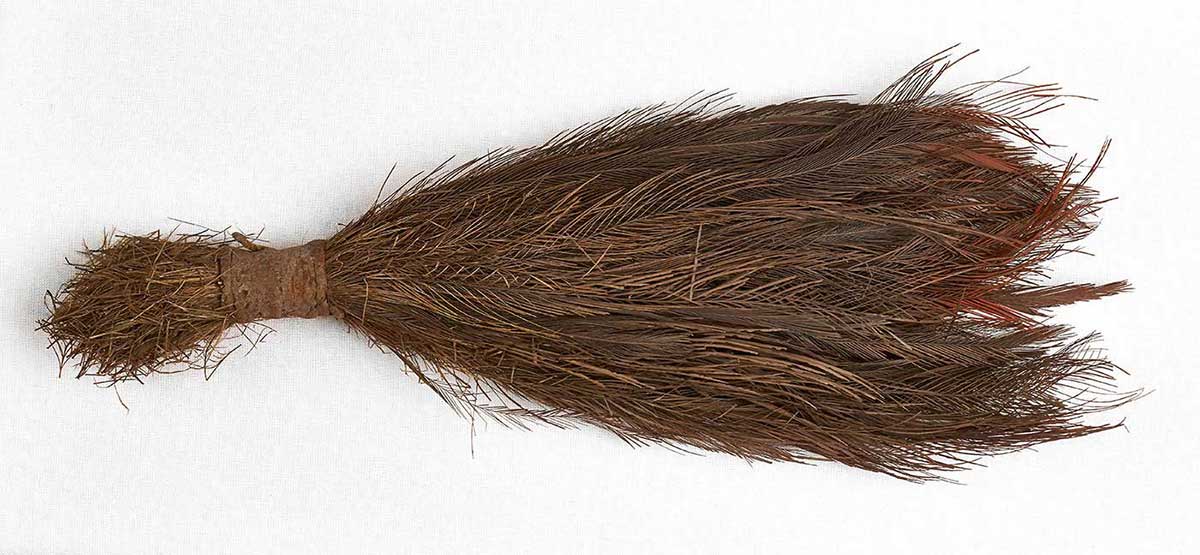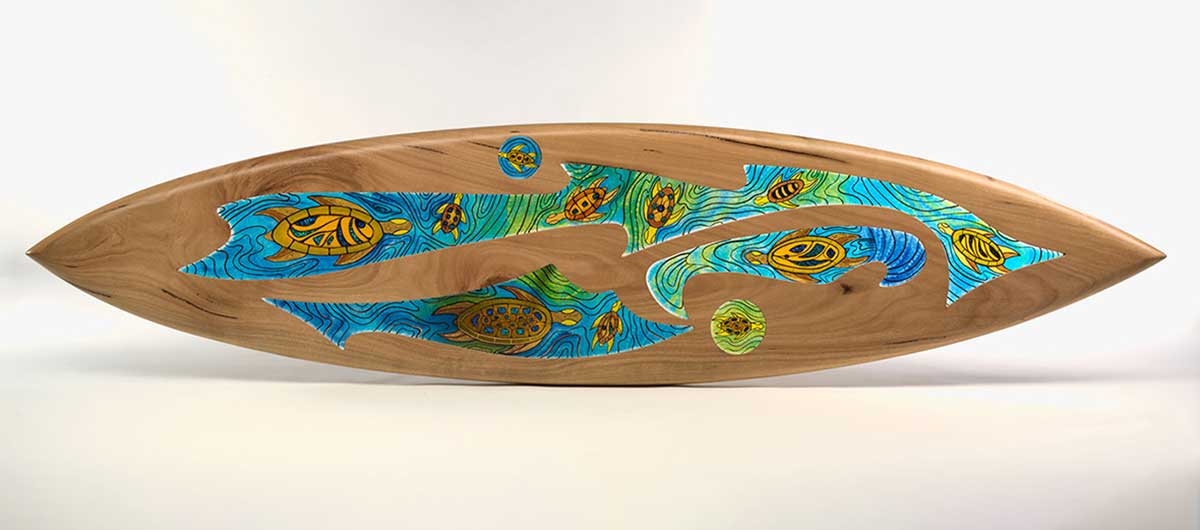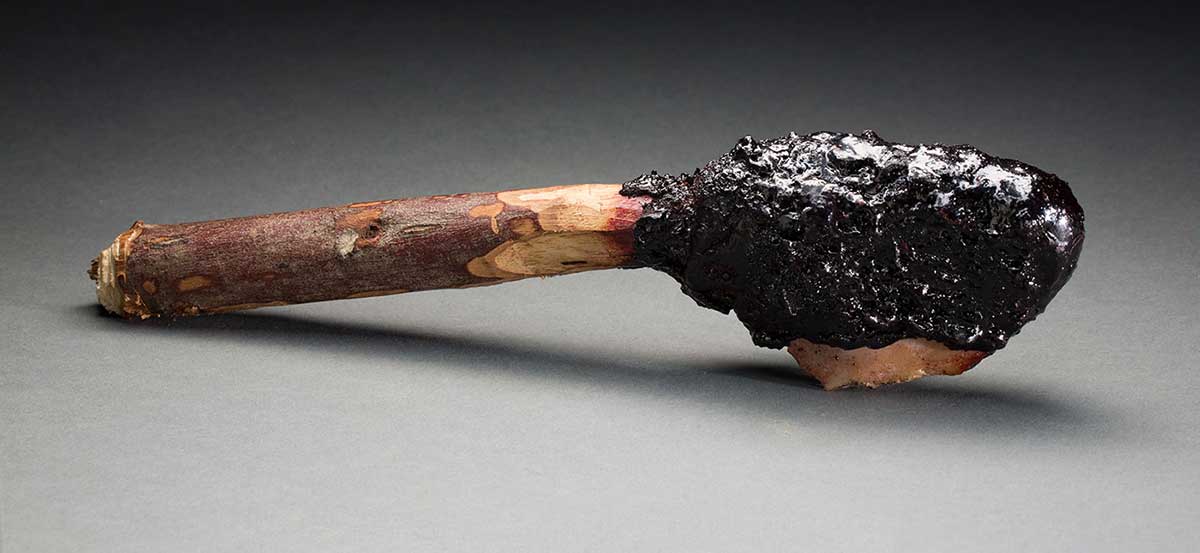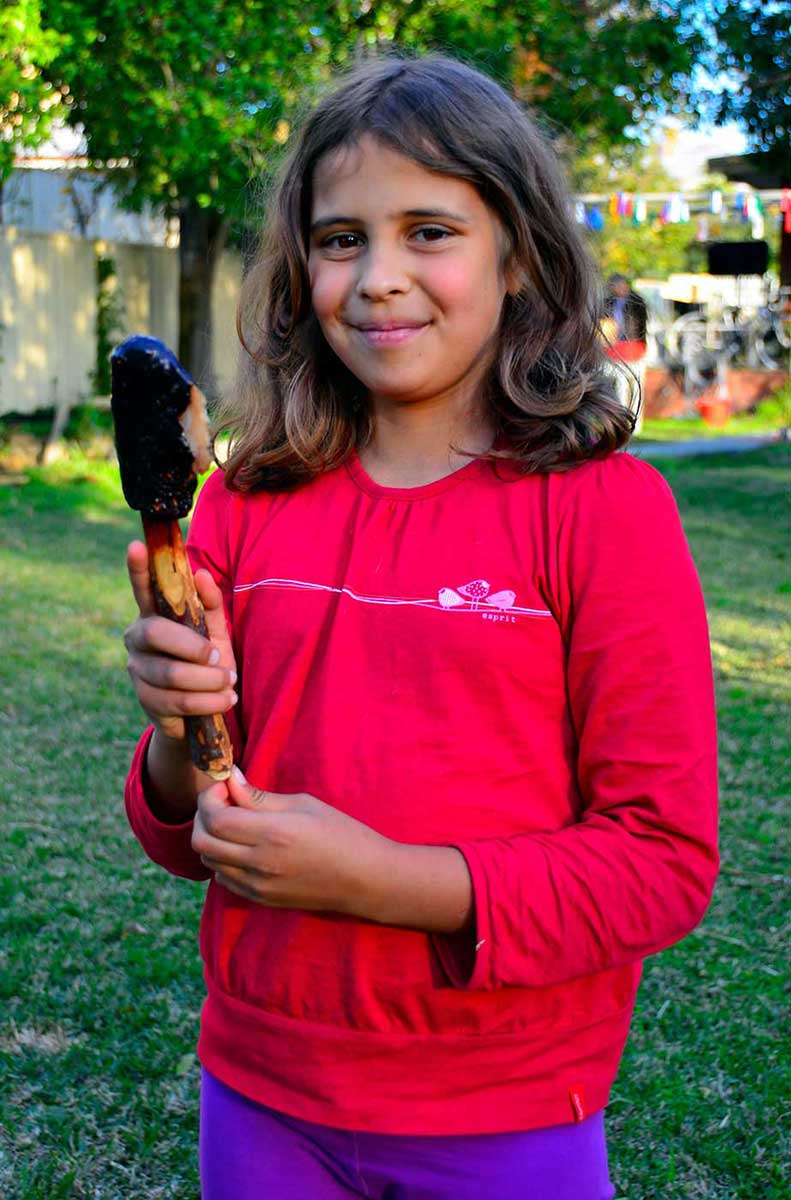Noongar country
Richard Walley, Noongar-Yamatji, 2013:
We see life in a boomerang, we see a story in a stick.
Miago, a young Noongar man from Wurerup (Upper Swan), took a great interest in the British during the early days of the Swan River colony at present-day Perth. He learnt English and joined exploration parties, sailing up the Kimberley coast on HMS Beagle in 1838.
At the same time, aspiring young colonist Samuel Talbot visited the Wurerup region. He collected Noongar objects, including the ngal-bo (feather dance ornament) below and other historical objects on display in Encounters. Talbot’s detailed accompanying notes – ‘Implements used by the natives in the neighbourhood of the Swan River’ – reveal a keenness to understand Noongar culture, with important implications for communities today.
Marie Taylor, Noongar, 2014:
I want to acknowledge the white people who sat down with the Aboriginal people, who wrote the stories down, who collected this information that still exists today. Down here in Noongar country, we may have lost all of that had it not been for many of these people.
Talbot’s colonial ventures proved ultimately unsuccessful and he returned to Britain. Miago, frustrated by his treatment at the hands of the British, abandoned his relations with them and returned to Wurerup.
Old objects
This ornament is part of the oldest surviving collection of Noongar objects from the Perth region. Talbot collected them during his last visit to Swan River (Perth) in 1838.
He stayed with George Fletcher Moore, a prominent settler who took a deep interest in the Noongar people and their culture. Moore may have helped Talbot in preparing the detailed descriptions of the objects that Talbot gave to the British Museum in 1839.
New objects
Boyi Moort (turtle families), 2014
Peter Farmer, Noongar, 2015:
When I was a young boy, when we swam in the rivers or the ocean, we would see if we could see any turtles – a strong and significant totem in my father's country. There were always turtles of some sort, surrounded by their families ... Boyi Moort is a visual depiction of my time in the water with the turtles [boyi] ... and a representation of my Noongar families [moort].
Kodj (axe), 2013
Marie Taylor, Noongar, 2013:
The making of traditional tools is still being taught. We collect the gum, crush it up, mix it up and crush it up with kangaroo poop. I have fun and games with the children when we teach that to them.
Dr Noel Nannup, Noongar elder, 2014:
What is important is not just the object but the knowledge about making it. About the bird, the tree, about the relationships embedded in that knowledge. It’s all about relationship.
You may also like



